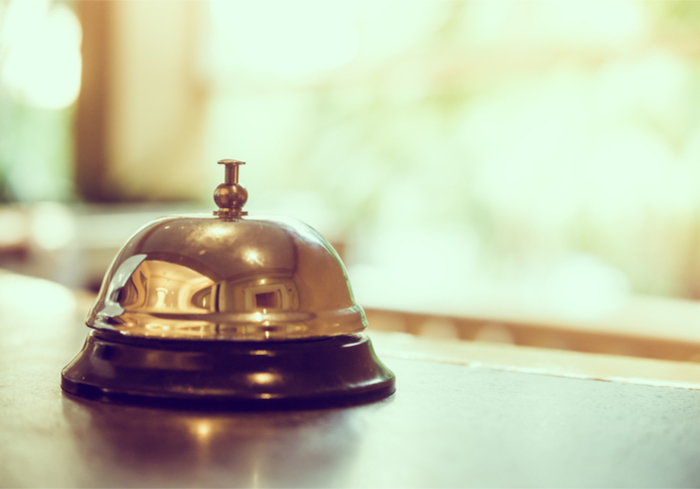
Restaurants and hotels are taking a new approach to helping guests order a new round or ask for a check: They are turning to digital butler bells to allow diners to call for their servers. Kallpod, for example, is a one- or three-button device that enables customers to ask for assistance from staff in any environment where a guest might need service. Customers can press a button that sends a message and their location to a staff member’s wearable device. The idea is to reinforce the human element of service in settings such as restaurants or hotels.
“Our main intent is technology that increases human engagement and provides another engagement point with a person,” Kallpod COO Steven Barrow Barlow told PYMNTS.com in an interview.
Devices such as Kallpod can deliver many benefits to restaurants: For one, Barlow said it highlights an establishment’s commitment to service and allows guests to have a say in their service. The device is empowering for the guest, Barlow added, as the diner doesn’t have to raise their hand or use eye contact to bring a server to his or her table. And, in terms of sales, devices like Kallpod can generate incremental revenue from impulse items such as beverages and desserts. In addition, “it’s an icebreaker that brings the guest closer to service staff,” Barlow noted.
Customer Service and Re-Orders
To help bolster the guest experience, Chick-fil-A is among the restaurants that are testing out Kallpod. (The device comes to the quick-service restaurant (QSR) chain after Joseph DeCola, a Houston franchise owner, spotted one while on vacation in Hawaii.) Customers can call for a staff member with the device; that staff member, in turn, receives an alert on his or her smartwatch that a customer either has a question, wants to place a second order or needs a manager.
In terms of customers, Barlow said that Chick-fil-A is a bit different than most of its client base: The QSR isn’t a full-service restaurant or hotel. As a result, the company designed the platform mainly around re-ordering. With the rollout at Chick-fil-A, Barlow said the company did see higher reorder revenues. But the idea behind bringing the devices into some of the restaurant’s locations wasn’t all about the increased revenue: “It was to reinforce that service culture that everyone knows,” Barlow said.
Operationally, Barlow said Chick-fil-A is a leader in the space. And, even when it already had higher service scores than most of its peers, the restaurant saw a big pickup in guest service scores after the company’s platform was deployed. (The news comes as Factual looked a bit more deeply into the second-favorite fast food chain in each state, and discovered that Chick-fil-A attained regional dominance, garnering the title of No. 2 QSR in every state in the Southeast between Maryland and Alabama.)
The Road Ahead
Beyond restaurants, devices like Kallpod can be used in hotels areas including lobby spaces, bars, restaurants and pools. In essence, they can be placed anywhere restaurant service is provided—whether or not it is a formal restaurant environment. Barlow said that is particularly important for limited-service hotels that want to extend their services. There might not be enough traffic to merit staffing a small kitchen or food kiosk outside the pool, for example, but by using devices like Kallpod, limited-service hotels can extend service and leverage their existing staff to help guests in lower-traffic areas.
Going forward, Kallpod is integrating new capabilities and technology. The company’s first version was radio wave-based, and its second version has a broader platform through Wi-Fi. The new version also has metrics, data and reporting of staff response times, along with a new way for customers to interact with Kallpods: Customers can interface with the pod using their own digital device. In order to activate the pod through their smartphones, they can tap a unique page with virtual buttons or options.
Regardless of the version of Kallpod, the idea is that guests in a hotel or restaurant “still treasure that human interaction,” Barlow said. As a result, devices like these are meant to help provide that human touch– even if there is a little technology involved.